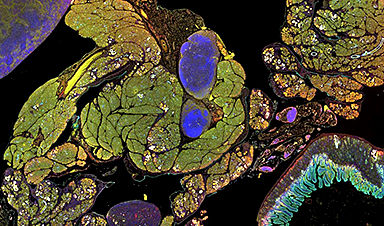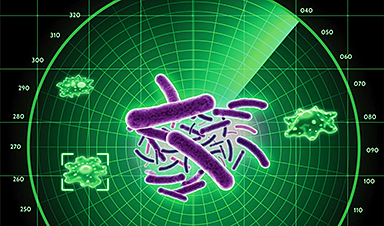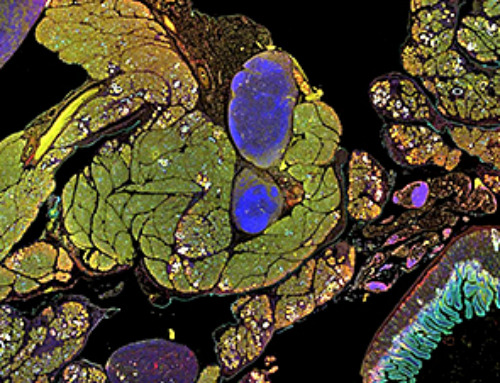Two human cases of “dual mutant” strains of H1N1 flu have been reported by U.S. health officials.
Unfortunately, the genetic changes appear to render the leading flu antiviral, Tamiflu, less effective, researchers from the U.S. Centers for Disease Control and Prevention noted.
The new analysis, published Wednesday in the agency’s Emerging Infectious Diseases journal, describes these two concerning mutations—which scientists have dubbed I223V and S247N.
The latest finding follows a report published last March in the Lancet journal by Hong Kong scientists that found the two mutations seemed to raise resistance to the flu treatment oseltamivir (Tamiflu).
Lab tests found the mutated flu viruses were up to 16 times less sensitive to the antiviral, a smaller drop-off than in some previous worrying mutations, reported researchers led by Mira Patel, a senior scientist at the CDC.
Still, the agency isn’t hitting the panic button at this point.
“These mutated viruses retained sensitivity to other anti-influenza medications, including a newer one, baloxavir marboxil. There are no immediate implications to change decisions for clinical care,” a CDC spokesperson told CBS News, and vaccination still offers protection against mutated viruses.
Despite the “rapid spread of dual mutants to countries on different continents,” the CDC report added that these new flu strains are still rare for now.
Since they were first spotted in a case sampled from the Canadian province of British Columbia in May 2023, 101 sequences have been submitted to the global virus database GISAID from Africa, Asia, Europe, North America and Oceania, CBS News reported.
The two U.S. cases were detected by labs at the Connecticut Department of Health and University of Michigan this past fall and winter.
“It is unknown how widely these mutated viruses will circulate in the upcoming season. It is important to continue monitoring the spread of these viruses and the evolution of these viruses,” the CDC spokesperson said.
Tamiflu is the most commonly prescribed flu treatment, according to the CDC. A study published in the journal Pediatrics last year found the drug made up 99.8% of flu antivirals prescribed to kids.
Doctors have also turned to Tamiflu to treat humans infected during an ongoing outbreak of bird flu in dairy farms this year, CBS News reported.
More information: Mira C. Patel et al, Multicountry Spread of Influenza A(H1N1)pdm09 Viruses with Reduced Oseltamivir Inhibition, May 2023–February 2024, Emerging Infectious Diseases (2024). DOI: 10.3201/eid3007.240480
Rhoda Cheuk-Ying Leung et al, Global emergence of neuraminidase inhibitor-resistant influenza A(H1N1)pdm09 viruses with I223V and S247N mutations: implications for antiviral resistance monitoring, The Lancet Microbe (2024). DOI: 10.1016/S2666-5247(24)00037-5
News
Studies detail high rates of long COVID among healthcare, dental workers
Researchers have estimated approximately 8% of Americas have ever experienced long COVID, or lasting symptoms, following an acute COVID-19 infection. Now two recent international studies suggest that the percentage is much higher among healthcare workers [...]
Melting Arctic Ice May Unleash Ancient Deadly Diseases, Scientists Warn
Melting Arctic ice increases human and animal interactions, raising the risk of infectious disease spread. Researchers urge early intervention and surveillance. Climate change is opening new pathways for the spread of infectious diseases such [...]
Scientists May Have Found a Secret Weapon To Stop Pancreatic Cancer Before It Starts
Researchers at Cold Spring Harbor Laboratory have found that blocking the FGFR2 and EGFR genes can stop early-stage pancreatic cancer from progressing, offering a promising path toward prevention. Pancreatic cancer is expected to become [...]
Breakthrough Drug Restores Vision: Researchers Successfully Reverse Retinal Damage
Blocking the PROX1 protein allowed KAIST researchers to regenerate damaged retinas and restore vision in mice. Vision is one of the most important human senses, yet more than 300 million people around the world are at [...]
Differentiating cancerous and healthy cells through motion analysis
Researchers from Tokyo Metropolitan University have found that the motion of unlabeled cells can be used to tell whether they are cancerous or healthy. They observed malignant fibrosarcoma cells and [...]
This Tiny Cellular Gate Could Be the Key to Curing Cancer – And Regrowing Hair
After more than five decades of mystery, scientists have finally unveiled the detailed structure and function of a long-theorized molecular machine in our mitochondria — the mitochondrial pyruvate carrier. This microscopic gatekeeper controls how [...]
Unlocking Vision’s Secrets: Researchers Reveal 3D Structure of Key Eye Protein
Researchers have uncovered the 3D structure of RBP3, a key protein in vision, revealing how it transports retinoids and fatty acids and how its dysfunction may lead to retinal diseases. Proteins play a critical [...]
5 Key Facts About Nanoplastics and How They Affect the Human Body
Nanoplastics are typically defined as plastic particles smaller than 1000 nanometers. These particles are increasingly being detected in human tissues: they can bypass biological barriers, accumulate in organs, and may influence health in ways [...]
Measles Is Back: Doctors Warn of Dangerous Surge Across the U.S.
Parents are encouraged to contact their pediatrician if their child has been exposed to measles or is showing symptoms. Pediatric infectious disease experts are emphasizing the critical importance of measles vaccination, as the highly [...]
AI at the Speed of Light: How Silicon Photonics Are Reinventing Hardware
A cutting-edge AI acceleration platform powered by light rather than electricity could revolutionize how AI is trained and deployed. Using photonic integrated circuits made from advanced III-V semiconductors, researchers have developed a system that vastly [...]
A Grain of Brain, 523 Million Synapses, Most Complicated Neuroscience Experiment Ever Attempted
A team of over 150 scientists has achieved what once seemed impossible: a complete wiring and activity map of a tiny section of a mammalian brain. This feat, part of the MICrONS Project, rivals [...]
The Secret “Radar” Bacteria Use To Outsmart Their Enemies
A chemical radar allows bacteria to sense and eliminate predators. Investigating how microorganisms communicate deepens our understanding of the complex ecological interactions that shape our environment is an area of key focus for the [...]
Psychologists explore ethical issues associated with human-AI relationships
It's becoming increasingly commonplace for people to develop intimate, long-term relationships with artificial intelligence (AI) technologies. At their extreme, people have "married" their AI companions in non-legally binding ceremonies, and at least two people [...]
When You Lose Weight, Where Does It Actually Go?
Most health professionals lack a clear understanding of how body fat is lost, often subscribing to misconceptions like fat converting to energy or muscle. The truth is, fat is actually broken down into carbon [...]
How Everyday Plastics Quietly Turn Into DNA-Damaging Nanoparticles
The same unique structure that makes plastic so versatile also makes it susceptible to breaking down into harmful micro- and nanoscale particles. The world is saturated with trillions of microscopic and nanoscopic plastic particles, some smaller [...]
AI Outperforms Physicians in Real-World Urgent Care Decisions, Study Finds
The study, conducted at the virtual urgent care clinic Cedars-Sinai Connect in LA, compared recommendations given in about 500 visits of adult patients with relatively common symptoms – respiratory, urinary, eye, vaginal and dental. [...]





















